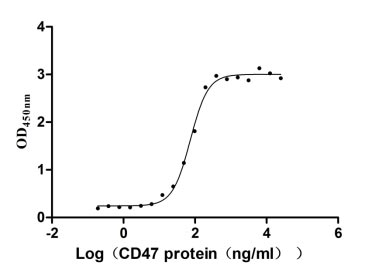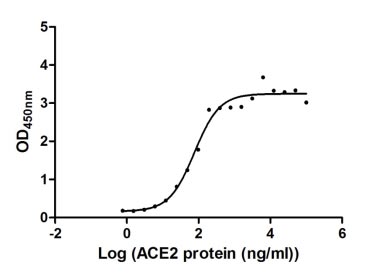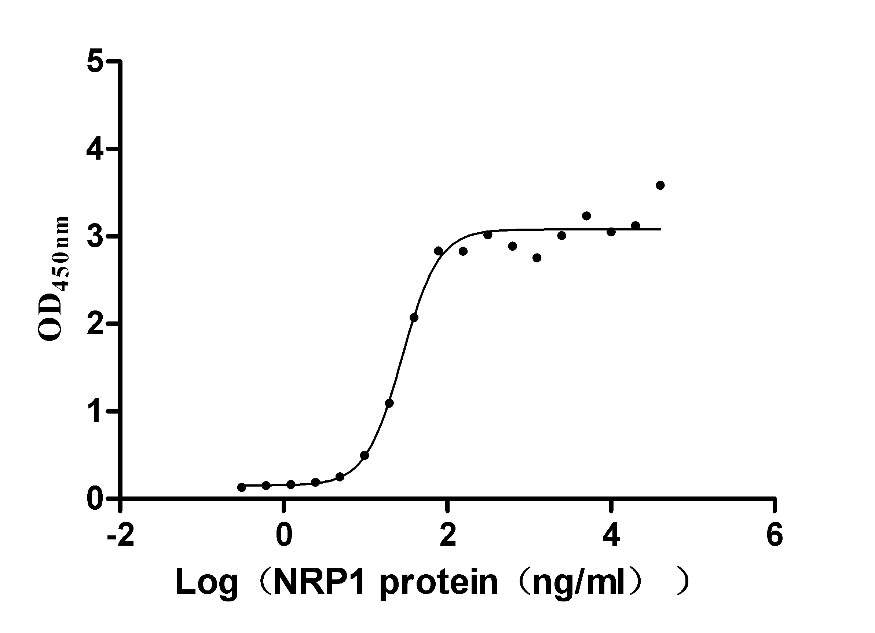Recombinant Human Syntaxin-binding protein 4 (STXBP4)
-
货号:CSB-YP757971HU
-
规格:
-
来源:Yeast
-
其他:
-
货号:CSB-EP757971HU
-
规格:
-
来源:E.coli
-
其他:
-
货号:CSB-EP757971HU-B
-
规格:
-
来源:E.coli
-
共轭:Avi-tag Biotinylated
E. coli biotin ligase (BirA) is highly specific in covalently attaching biotin to the 15 amino acid AviTag peptide. This recombinant protein was biotinylated in vivo by AviTag-BirA technology, which method is BriA catalyzes amide linkage between the biotin and the specific lysine of the AviTag.
-
其他:
-
货号:CSB-BP757971HU
-
规格:
-
来源:Baculovirus
-
其他:
-
货号:CSB-MP757971HU
-
规格:
-
来源:Mammalian cell
-
其他:
产品详情
-
纯度:>85% (SDS-PAGE)
-
基因名:STXBP4
-
Uniprot No.:
-
别名:FLJ16496; MGC149829; MGC50337; OTTHUMP00000082667; OTTHUMP00000227400; STX4-interacting protein; STXB4_HUMAN; Stxbp4; Synip; Syntaxin 4 interacting protein; Syntaxin 4-interacting protein; Syntaxin binding protein 4; Syntaxin-binding protein 4
-
种属:Homo sapiens (Human)
-
蛋白长度:full length protein
-
表达区域:1-553
-
氨基酸序列MNKNTSTVVS PSLLEKDPAF QMITIAKETG LGLKVLGGIN RNEGPLVYIQ EIIPGGDCYK DGRLKPGDQL VSVNKESMIG VSFEEAKSII TGAKLRLESA WEIAFIRQKS DNIQPENLSC TSLIEASGEY GPQASTLSLF SSPPEILIPK TSSTPKTNND ILSSCEIKTG YNKTVQIPIT SENSTVGLSN TDVASAWTEN YGLQEKISLN PSVRFKAEKL EMALNYLGIQ PTKEQHQALR QQVQADSKGT VSFGDFVQVA RNLFCLQLDE VNVGAHEISN ILDSQLLPCD SSEADEMERL KCERDDALKE VNTLKEKLLE SDKQRKQLTE ELQNVKQEAK AVVEETRALR SRIHLAEAAQ RQAHGMEMDY EEVIRLLEAK ITELKAQLAD YSDQNKESVQ DLKKRIMVLD CQLRKSEMAR KTFEASTEKL LHFVEAIQEV FSDNSTPLSN LSERRAVLAS QTSLTPLGRN GRSIPATLAL ESKELVKSVR ALLDMDCLPY GWEEAYTADG IKYFINHVTQ TTSWIHPVMS VLNLSRSEEN EEDCSRELPN QKS
-
蛋白标签:Tag type will be determined during the manufacturing process.
The tag type will be determined during production process. If you have specified tag type, please tell us and we will develop the specified tag preferentially. -
产品提供形式:Lyophilized powder
Note: We will preferentially ship the format that we have in stock, however, if you have any special requirement for the format, please remark your requirement when placing the order, we will prepare according to your demand. -
复溶:We recommend that this vial be briefly centrifuged prior to opening to bring the contents to the bottom. Please reconstitute protein in deionized sterile water to a concentration of 0.1-1.0 mg/mL.We recommend to add 5-50% of glycerol (final concentration) and aliquot for long-term storage at -20℃/-80℃. Our default final concentration of glycerol is 50%. Customers could use it as reference.
-
储存条件:Store at -20°C/-80°C upon receipt, aliquoting is necessary for mutiple use. Avoid repeated freeze-thaw cycles.
-
保质期:The shelf life is related to many factors, storage state, buffer ingredients, storage temperature and the stability of the protein itself.
Generally, the shelf life of liquid form is 6 months at -20°C/-80°C. The shelf life of lyophilized form is 12 months at -20°C/-80°C. -
货期:Delivery time may differ from different purchasing way or location, please kindly consult your local distributors for specific delivery time.Note: All of our proteins are default shipped with normal blue ice packs, if you request to ship with dry ice, please communicate with us in advance and extra fees will be charged.
-
注意事项:Repeated freezing and thawing is not recommended. Store working aliquots at 4°C for up to one week.
-
Datasheet :Please contact us to get it.
相关产品
靶点详情
-
功能:Plays a role in the translocation of transport vesicles from the cytoplasm to the plasma membrane. Inhibits the translocation of SLC2A4 from intracellular vesicles to the plasma membrane by STX4A binding and preventing the interaction between STX4A and VAMP2. Stimulation with insulin disrupts the interaction with STX4A, leading to increased levels of SLC2A4 at the plasma membrane. May also play a role in the regulation of insulin release by pancreatic beta cells after stimulation by glucose.
-
基因功能参考文献:
- High STXBP4 expression is associated with squamous cell carcinogenesis. PMID: 29735662
- The deleterious SNPs localized in STXBP4 and ZNF404 genes were identified which might play a role in breast cancer development by dysregulating its gene expression. PMID: 28422318
- Expression studies in breast tumor tissues found SNP rs2787486 to be associated with increased STXBP4 expression, suggesting this may be a target gene of this locus. PMID: 27600471
- Whole transcriptome sequencing followed by pathway analysis indicated that STXBP4 is involved in functional gene networks that regulate cell growth, proliferation, cell death, and survival in cancer. Platelet-derived growth factor receptor alpha (PDGFRalpha) was a key downstream mediator of STXBP4 function. In line with this, shRNA mediated STXBP4 and PDGFRA knockdown suppressed tumor growth in soft-agar and xenograft ... PMID: 28087642
- meta-analysis suggested that polymorphism STXBP4/COX11 rs6504950 variant was significantly associated with breast cancer risk; the A allele of rs6504950 decreased the risk of breast cancer PMID: 22863968
- Observational study of gene-disease association and gene-gene interaction. (HuGE Navigator) PMID: 20416077
- Observational study of gene-disease association and gene-environment interaction. (HuGE Navigator) PMID: 20095854
- Observational study of gene-disease association and gene-environment interaction. (HuGE Navigator) PMID: 20145138
- Syntaxin 4 and Synip (syntaxin 4 interacting protein) regulate insulin secretion in the pancreatic beta HC-9 cells PMID: 12855681
- Stxbp4 and RACK1, two scaffold proteins, play central roles in balancing DeltaNp63 protein levels. While Stxbp4 functions to stabilize DeltaNp63 proteins, RACK1 targets DeltaNp63 for degradation. PMID: 19451233
显示更多
收起更多
-
亚细胞定位:Cytoplasm.
-
数据库链接:
HGNC: 19694
OMIM: 610415
KEGG: hsa:252983
STRING: 9606.ENSP00000365530
UniGene: Hs.35199
Most popular with customers
-
Recombinant Human Leukocyte surface antigen CD47 (CD47), partial (Active)
Express system: Mammalian cell
Species: Homo sapiens (Human)
-
Recombinant Human Angiotensin-converting enzyme 2 (ACE2), partial (Active)
Express system: Mammalian cell
Species: Homo sapiens (Human)
-
Recombinant Human Neuropilin-1 (NRP1) (Active)
Express system: Mammalian cell
Species: Homo sapiens (Human)
-
Recombinant Macaca fascicularis Claudin (CLDN18)-VLPs (Active)
Express system: Mammalian cell
Species: Macaca fascicularis (Crab-eating macaque) (Cynomolgus monkey)
-
Recombinant Human Desmoglein-2 (DSG2), partial (Active)
Express system: Mammalian cell
Species: Homo sapiens (Human)
-
Recombinant Human Cell adhesion molecule 1 (CADM1), partial (Active)
Express system: Mammalian cell
Species: Homo sapiens (Human)
-
Recombinant Rat Gastric inhibitory polypeptide receptor (Gipr), partial (Active)
Express system: Mammalian cell
Species: Rattus norvegicus (Rat)
-
Recombinant Macaca fascicularis CUB domain containing protein 1 (CDCP1), partial (Active)
Express system: Mammalian cell
Species: Macaca fascicularis (Crab-eating macaque) (Cynomolgus monkey)




















